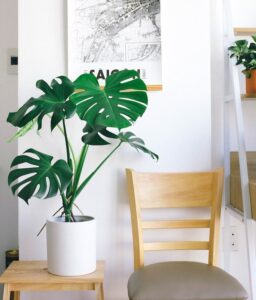In this post, we’ll explore various perennials that not only tolerate shade but can flourish in it, adding texture, color, and life to your garden.
Astilbe

Astilbe is a standout choice for shaded gardens, celebrated for its feathery plumes of flowers that can sport vibrant hues ranging from white to deep pink and red. These plants thrive in moist, rich soil, making them perfect for locations with partial to full shade. They typically bloom in early to mid-summer and require very little maintenance once established. If you want to add depth to your garden, consider planting various Astilbe varieties together to create a stunning visual display.
Astilbes are also fantastic for attracting pollinators, including butterflies and bees, which appreciate the nectar-rich blooms. The foliage is equally attractive; it takes on a striking bronzy hue in the fall, ensuring that your garden remains interesting even after the flowers have faded.
Barrenwort
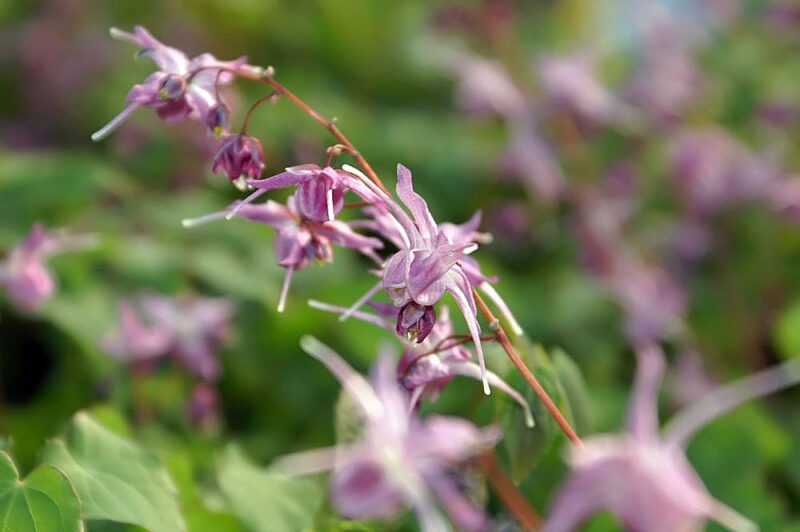
Barrenwort, known scientifically as Epimedium, is a unique perennial that offers more than just shade tolerance. This plant features heart-shaped leaves and delicate flowers that emerge in early spring. The blooms, often in shades of yellow, pink, or purple, can resemble little fairy lanterns, adding a whimsical touch to your garden.
One of the remarkable traits of Barrenwort is its ability to thrive in dry, shady conditions where many plants would struggle. It works well as a ground cover, suppressing weeds while providing a lush green backdrop. This plant is particularly useful in woodland settings where sunlight is sparse.
Boston Ivy
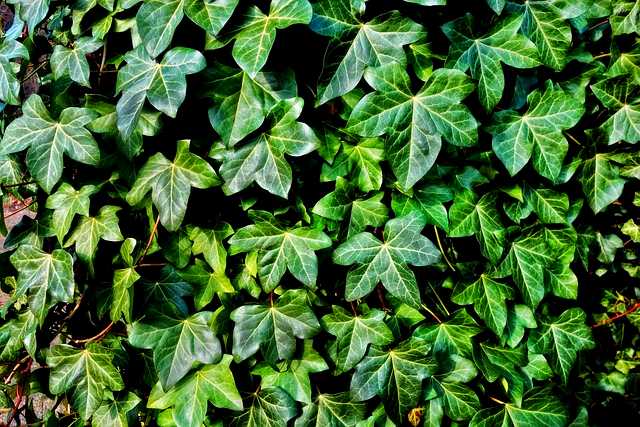
Boston Ivy (Parthenocissus tricuspidata) is a perennial vine that thrives in the dappled shade of trees or buildings. While often seen climbing walls or fences, it is an excellent choice for ground cover in shaded areas, adding a lush green color throughout the growing season. What sets Boston Ivy apart is its stunning fall color; it changes to a vibrant array of reds and purples, creating a stunning contrast with the autumn landscape.
Not only is Boston Ivy pleasing to the eye, but it also requires minimal maintenance, making it a practical choice for busy gardeners. Just ensure it has something to climb, and it will happily climb upwards, adorning your structures with its beautiful foliage.
Bleeding Heart
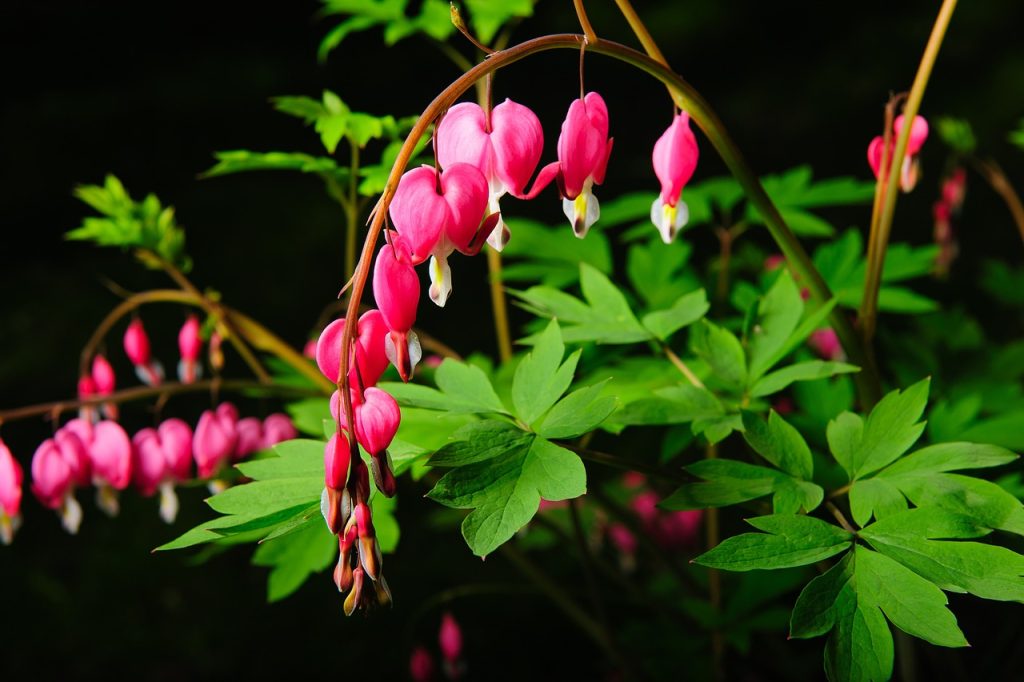
The Bleeding Heart (Lamprocapnos spectabilis) enchants garden lovers with its unique heart-shaped flowers that dangle delicately in clusters. This perennial flourishes in cool, shaded spots and can serve as a focal point in any garden. Typically blooming in late spring to early summer, its striking pink and white flowers are perfect for creating a romantic atmosphere.
Bleeding Hearts prefer rich, moist soil and can even thrive in conditions with less frequent watering, making them adaptable. The large, lush foliage complements the delicate flowers, ensuring that your garden looks vibrant even when the blooms have faded.
Bush Honeysuckle
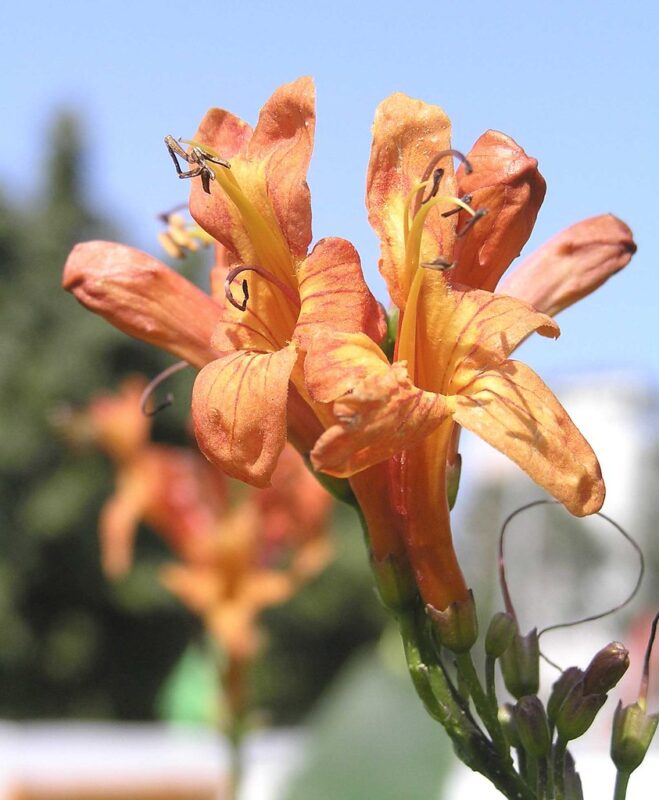
Bush honeysuckle (Lonicera spp.) is a vigorous shrub that flourishes in partial to full shade areas. Its sweet-smelling flowers can attract hummingbirds and bees, making it an excellent addition to pollinator gardens. The blooming period extends throughout the summertime, providing a source of nectar when many other plants are finished.
Though some species can become invasive, choosing the non-invasive varieties can ensure your garden remains harmonious and manageable. With minimal maintenance, bush honeysuckle can significantly enhance the wildlife aspect of your underutilized shaded garden areas.
Climbing Hydrangea
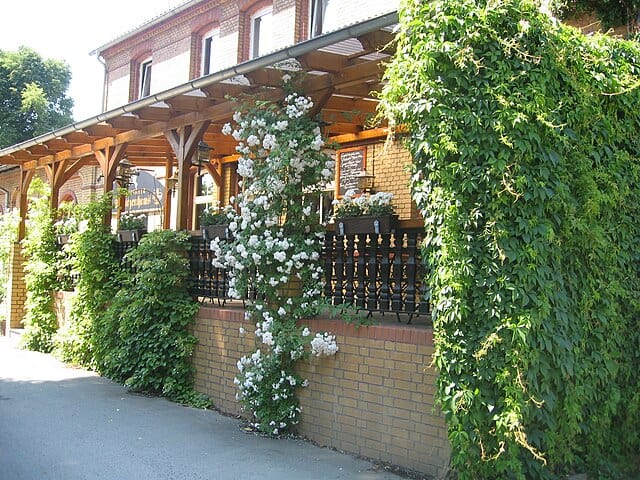
For gardeners looking to add vertical interest to their shady spaces, climbing hydrangea (Hydrangea anomala subsp. petiolaris) is an exceptional candidate. This climbing vine can scale trellises, fences, and even tree trunks, bringing a garden to life with its magnificent white blooms. The flowering typically occurs in late spring to early summer, with its sizeable, spherical flower clusters creating a stunning visual.
Climbing hydrangeas prefer moist, well-drained soil and benefit from some protection against harsh winds. Once established, they require very little care, making them a worthwhile investment for those who cherish flowering vines.
Columbine
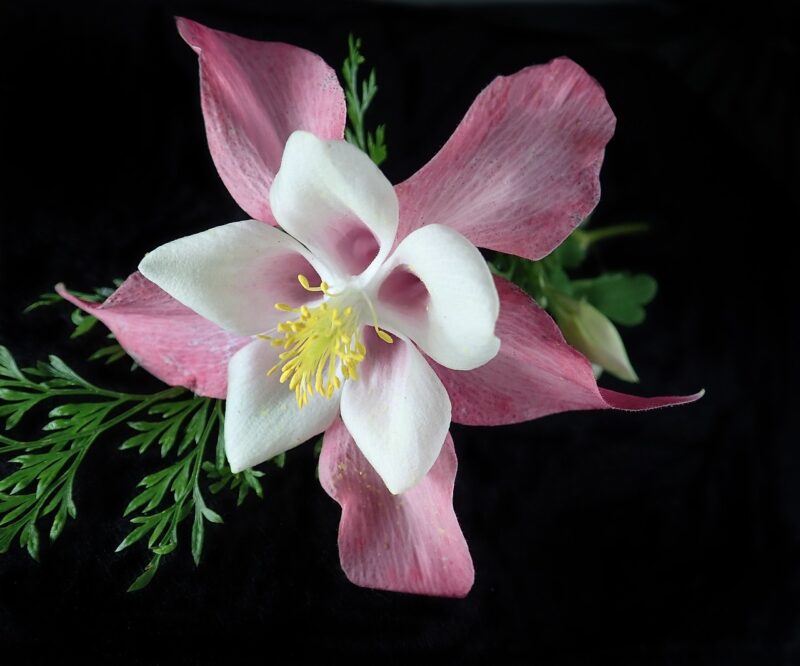
Columbine (Aquilegia) captures hearts with its unique flower structure and vibrant colors. These perennials thrive in partial shade and are known for attracting pollinators such as bees and hummingbirds, drawn in by their sugary nectar. Blooming from spring to early summer, columbine flowers come in a variety of colors, including blue, purple, yellow, and white, adding a splash of color to shady areas.
Columbine’s delicate appearance is countered by its resilience; it can tolerate a variety of soil conditions, making it an adaptable choice for many gardeners. Pairing columbine with other shade-loving plants can create beautiful, colorful compositions.
Coral Bells
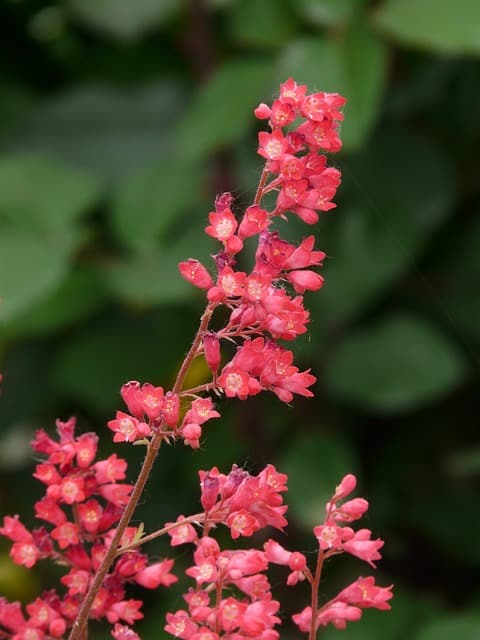
Heuchera, commonly known as coral bells, is a perennial celebrated for its striking foliage and delicate bell-shaped flowers. Available in shades of burgundy, silver, and green, coral bells are perfect for adding a splash of color to shady gardens. These plants prefer well-drained soil and a location with partial shade, making them an ideal choice for the woodland garden or beneath trees.
The tiny flowers bloom on tall stalks in mid-summer, attracting hummingbirds and other pollinators. Easy to care for and relatively low-maintenance, coral bells can create a captivating ground cover or border.
Creeping Myrtle
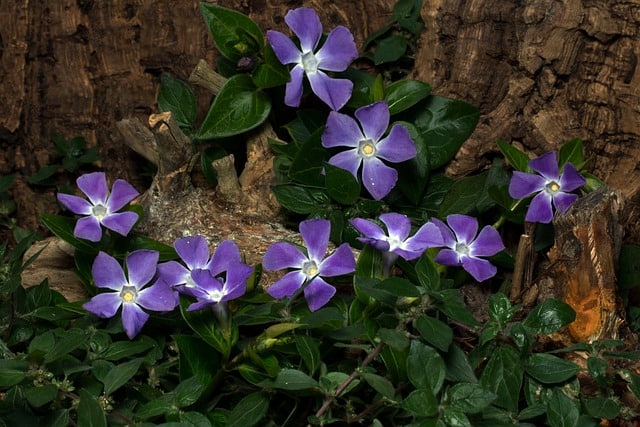
Creeping myrtle, or Vinca minor, is a popular ground cover that thrives in shady areas. Its vibrant green leaves and stunning blue or lavender flowers make it an appealing option for filling spaces that are difficult to plant. This perennial has a robust growth habit, making it effective at suppressing weeds and preventing soil erosion on slopes or in shady nooks.
Creeping myrtle is winter hardy and maintains a green presence throughout the year, making it a reliable choice for adding texture to any shaded area of your garden.
Dutchman’s Breeches
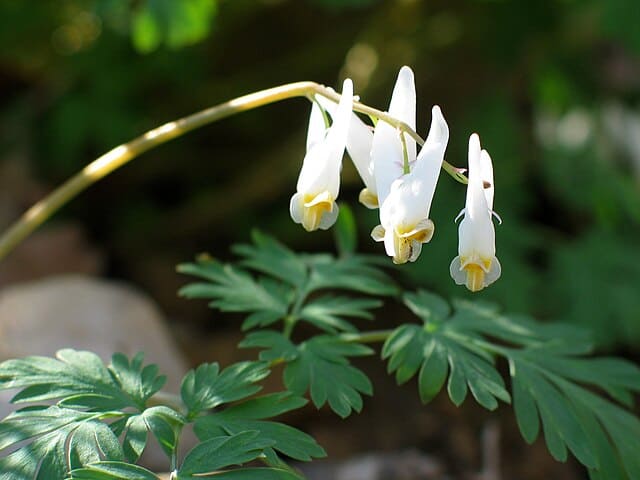
Dicentra cucullaria, commonly known as Dutchman’s breeches, is another shade-loving perennial that stands out for its distinctive foliage and flowers. The flowers resemble tiny, white breeches hanging from the plant, adding an element of whimsy to any garden space. It typically blooms in early spring, making it one of the first plants to flower in the garden after winter.
Dutchman’s breeches thrive in rich, well-draining soil and require consistent moisture, making them ideally suited for woodland gardens. The lush foliage provides a lovely backdrop for other spring blooms, enhancing any shaded spot.
Foxglove
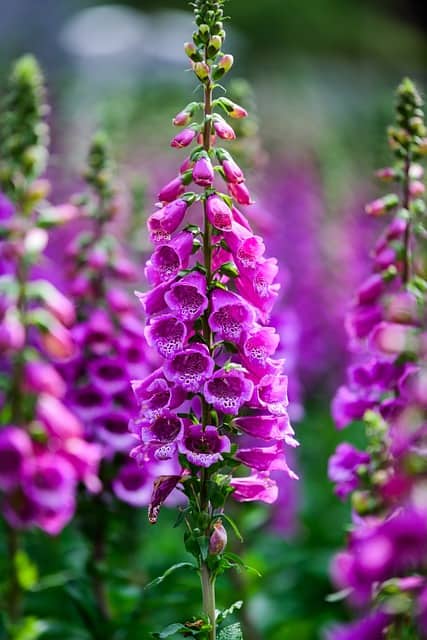
Foxglove (Digitalis purpurea), with its tall spires of tubular flowers, can create a dramatic effect in shaded gardens. Preferring partial shade, foxglove blooms in mid to late summer, offering a stunning array of colors that attract hummingbirds and bees. The flowers can range from white to deep purple, often with speckled throats that add visual interest.
Although foxgloves are biennials, they can intersperse beautifully with perennials, giving the illusion of a continuous bloom cycle. Care should be taken when planting, as all parts of the foxglove plant are toxic if ingested.
Hosta
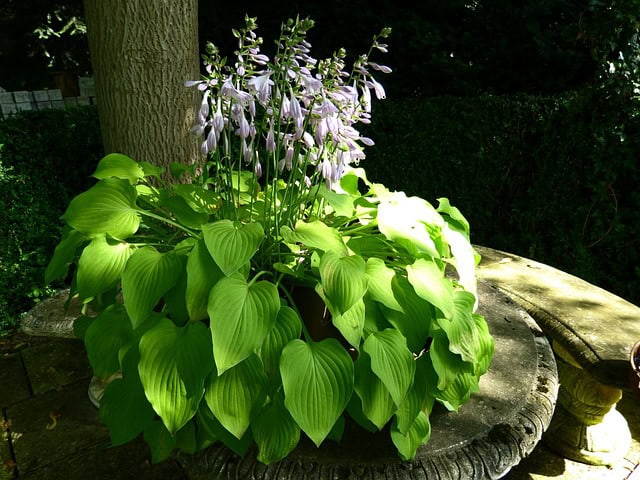
Hostas are perhaps the quintessential shade-loving perennial, with a diverse range of varieties that boast striking foliage in colors varying from deep green to gold to blue-grey. They thrive in partial to full shade and are well-suited to zone 5 climates. Not only do hostas come in numerous sizes, but they also add a textural element to shaded gardens with their ribbed leaves.
These perennials can endure a range of soil types, though they prefer rich, moist environments. The flowers, typically lavender or white, bloom in summer, attracting bees and other pollinators. With so many varieties available, hostas are a gardener’s delight, easily fitting into any garden theme.
Lenten Rose
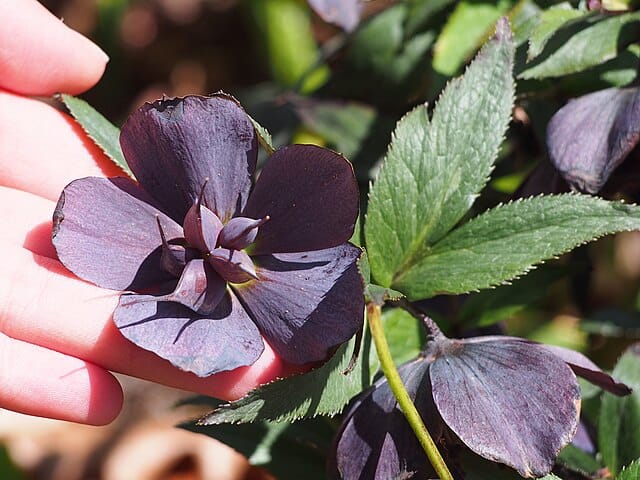
The Lenten rose (Helleborus orientalis) brings beauty and intrigue to the garden long before most flowers bloom, usually showing vibrant blooms as early as February. Known for its ability to thrive in difficult, shaded conditions, this perennial produces stunning, cup-shaped flowers in colors that range from creamy white to deep maroon.
Lenten roses are low-maintenance perennials that prefer well-drained soil with moderate moisture. Their evergreen leaves provide year-round interest, making them a reliable choice for adding greenery to your shade garden.
Lily of the Valley
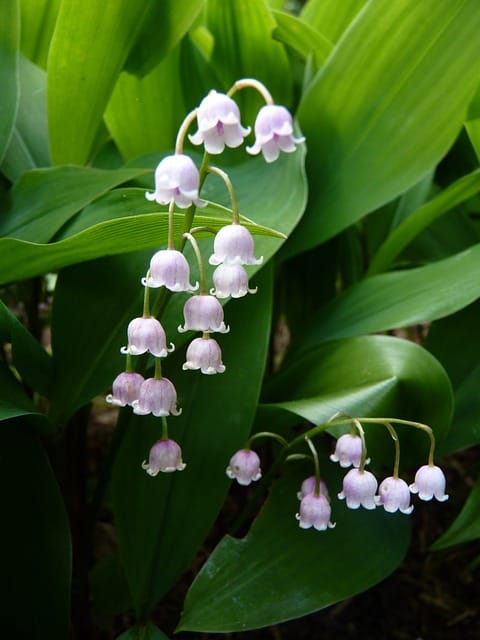
Lily of the Valley (Convallaria majalis) is known for its sweetly fragrant, bell-shaped flowers that bloom in late spring. This perennial thrives in shady areas, often spreading to form a dense carpet of lush green foliage adorned with small, white blooms. Lily of the Valley requires moist, well-drained soil and prefers cooler temperatures, making it well-suited to zone 5.
Though they can spread, they do so in a controlled manner, making them an excellent choice for shading areas or filling in under trees. With an enchanting fragrance and delicate appearance, these plants can transform any garden into a serene and aromatic sanctuary.
Lungwort

Pulmonaria, commonly known as lungwort, is a native ground cover that flourishes in shaded environments. One of its coolest features is the spotted leaves that provide visual interest long after the blooms have faded. The flowers bloom in early spring, often in shades of blue, pink, or white, making them perfect for early pollinators.
Lungwort prefers moist, rich soil and can thrive even in some of the shadiest corners of your garden. This versatile perennial is also deer-resistant, adding to its appeal for many gardeners.
Monkshood
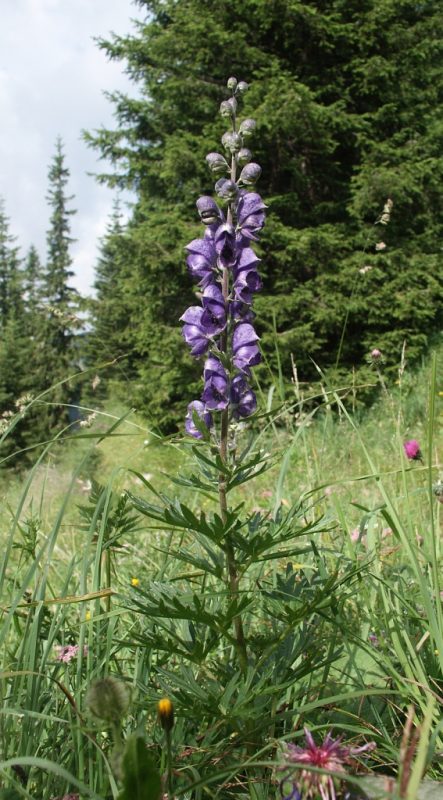
Monkshood (Aconitum spp.) is a perennial that can tolerate shade and adds an air of mystery to the shaded garden with its tall spikes of hooded flowers, often appearing in rich blues and purples. Typically blooming in late summer to early fall, monkshood prefers well-drained, moist soil.
Though beautiful, caution is advised—monkshood is highly toxic if ingested, so it’s best planted in areas not frequented by children or pets. The dramatic blooms can be striking in any setting, drawing the eye and creating focal points amongst other shade-loving plants.
Japanese Pachysandra
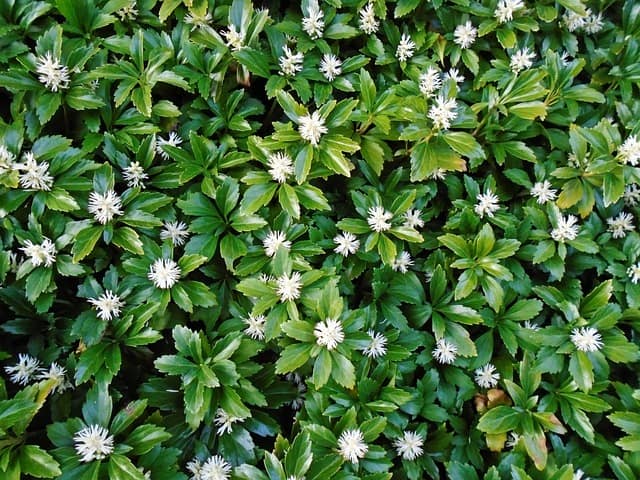
Japanese pachysandra (Pachysandra terminalis) is an evergreen ground cover that is ideal for shady areas. Known for its adaptability, it tolerates a variety of soil types, from dry to moist. The dark green leaves create a lush carpet that remains vibrant throughout the year.
During spring, it produces small white flowers that attract pollinators, though the foliage is the star of the show. Japanese pachysandra effectively suppresses weeds and can thrive in difficult conditions, making it a practical choice for gardeners looking to fill shady spots.
Rodgers Flower
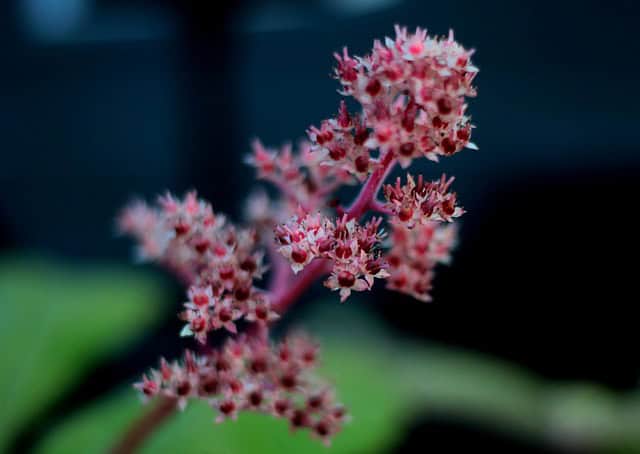
Rodgers flower (Rodgersia) is a bold perennial featuring large, attractive leaves that stand out in any garden setting. The plant prefers moist but well-drained soil and can thrive in partial to full shade. The fluffy flower clusters that arise in late spring to summer create a dramatic presence in the garden.
These plants are especially noted for their deer-resistant qualities, making them a smart addition if you’re dealing with wildlife issues in your garden. Their unique foliage texture adds depth and interest, working well in combination with other foliage varieties.
Trillium
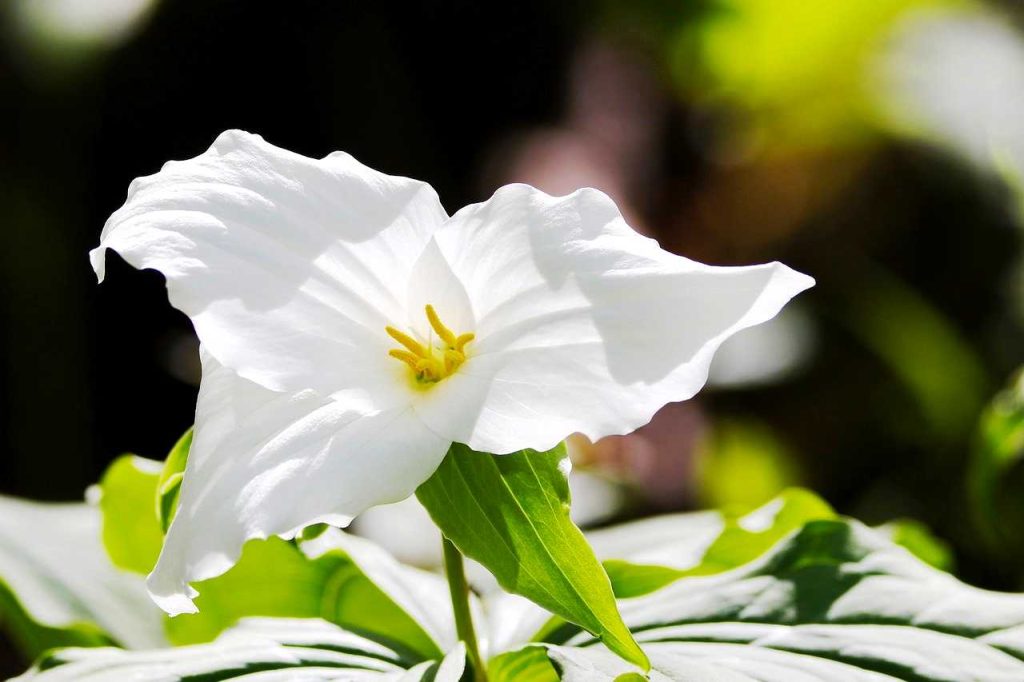
Trillium is a captivating native wildflower that signals the arrival of spring. This perennial thrives in shaded woodland conditions, producing stunning, three-petaled flowers in colors ranging from white to red to yellow. Trillium is known for its slow growth and can take several years to establish, making it a true treasure for dedicated gardeners.
They prefer rich, well-drained soil and moist conditions, which mirrors their native forest environments. Planting trillium in groups can create a dramatic display in shady areas, reminiscent of a forest bloom.
Toad Lily
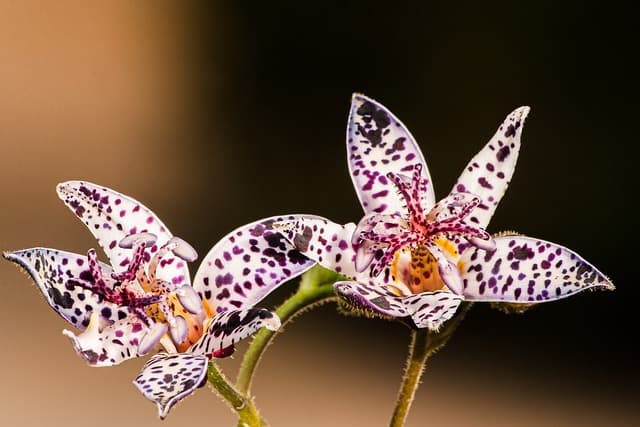
Toad lilies (Tricyrtis) are unique plants that can tolerate shade while offering exotic-looking flowers resembling orchids. Blooming in late summer to early fall, these perennials provide an extended season of interest with their intricate, spotted blooms.
Toad lilies thrive in well-drained soil enriched with organic matter. They are reliable and low-maintenance, making them a favorite for adding intrigue and color to shady spots. The exotic appearance of their blooms is often a conversation starter among visitors to your garden.
Witch Alder
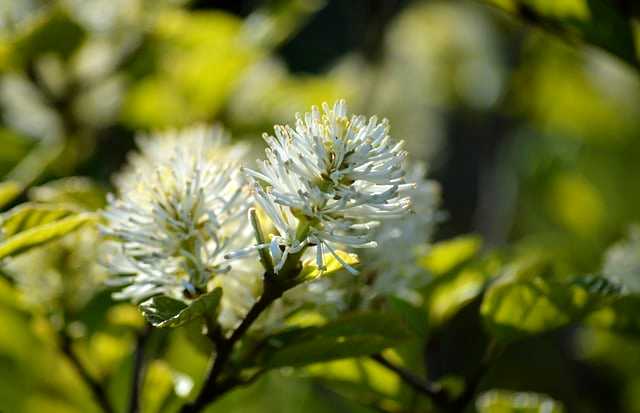
Lastly, witch alder (Fothergilla) is a deciduous shrub that thrives in shady settings. Its fragrant, white flowers emerge in spring, offering a delicate scent while adding visual appeal. Witch alder is also known for its dazzling fall foliage, which turns brilliant shades of orange and red, ensuring year-round interest in your garden.
These shrubs require moist, well-drained soil and can tolerate various light conditions, making them suitable for various landscape settings. Witch alder provides excellent texture and height among other perennials, enhancing the overall garden design.



